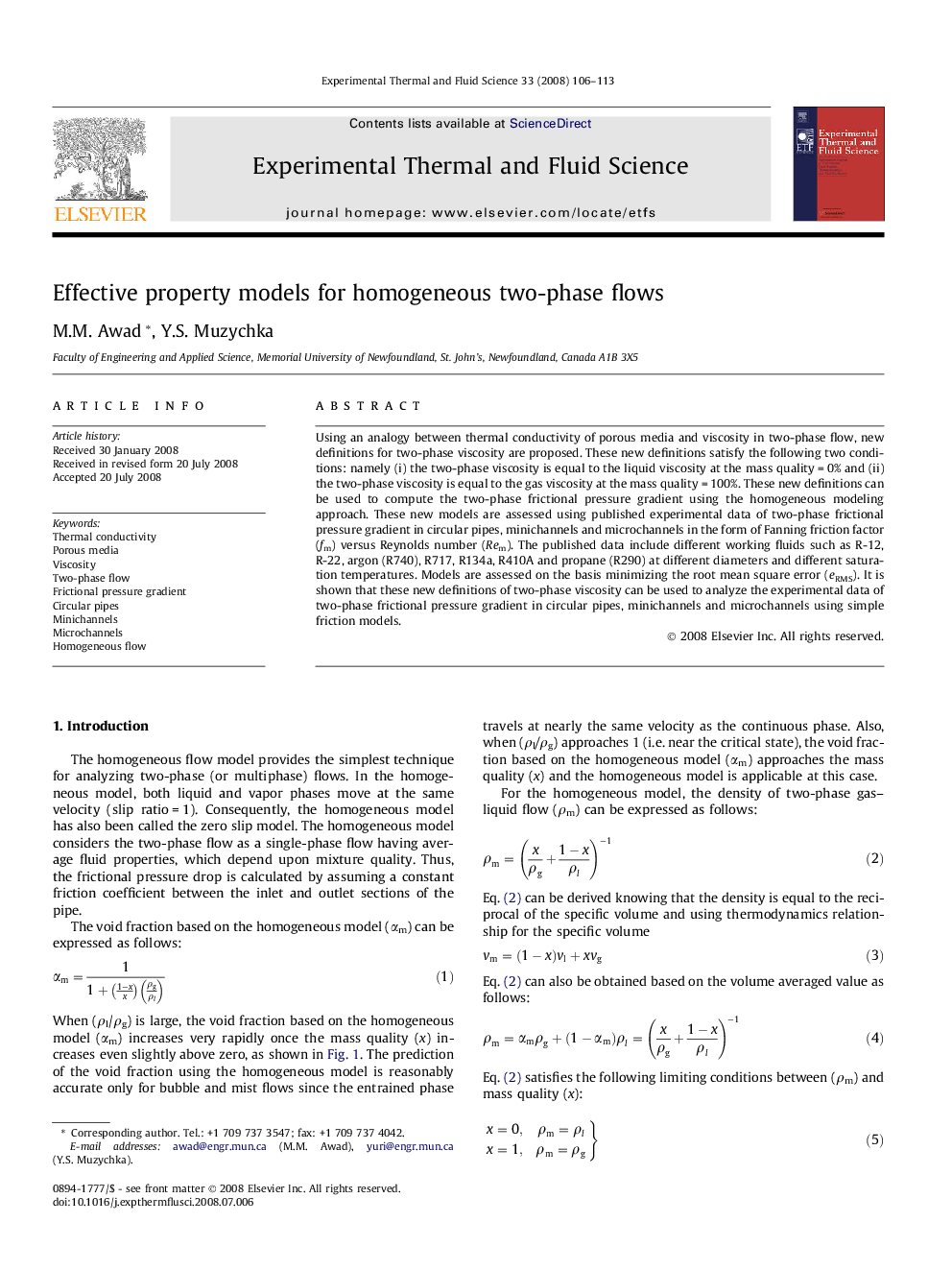| Article ID | Journal | Published Year | Pages | File Type |
|---|---|---|---|---|
| 652337 | Experimental Thermal and Fluid Science | 2008 | 8 Pages |
Using an analogy between thermal conductivity of porous media and viscosity in two-phase flow, new definitions for two-phase viscosity are proposed. These new definitions satisfy the following two conditions: namely (i) the two-phase viscosity is equal to the liquid viscosity at the mass quality = 0% and (ii) the two-phase viscosity is equal to the gas viscosity at the mass quality = 100%. These new definitions can be used to compute the two-phase frictional pressure gradient using the homogeneous modeling approach. These new models are assessed using published experimental data of two-phase frictional pressure gradient in circular pipes, minichannels and microchannels in the form of Fanning friction factor (fm) versus Reynolds number (Rem). The published data include different working fluids such as R-12, R-22, argon (R740), R717, R134a, R410A and propane (R290) at different diameters and different saturation temperatures. Models are assessed on the basis minimizing the root mean square error (eRMS). It is shown that these new definitions of two-phase viscosity can be used to analyze the experimental data of two-phase frictional pressure gradient in circular pipes, minichannels and microchannels using simple friction models.
